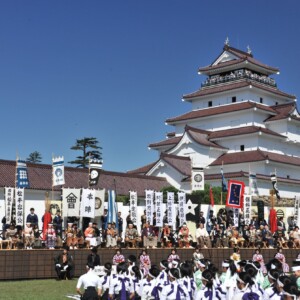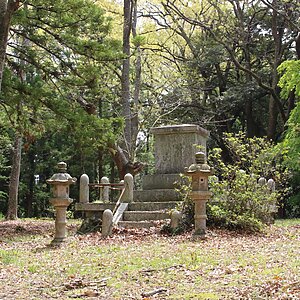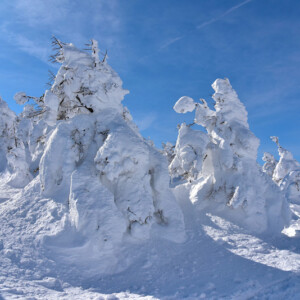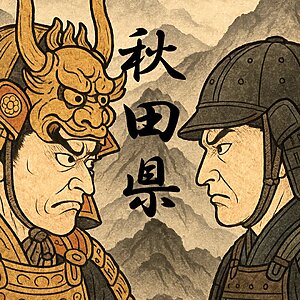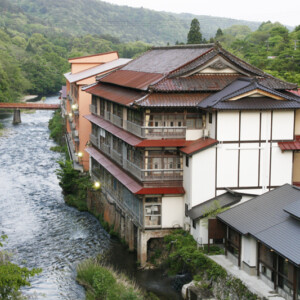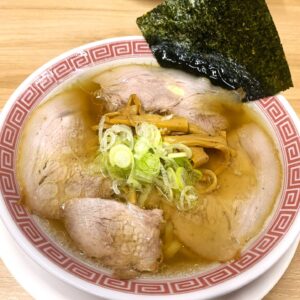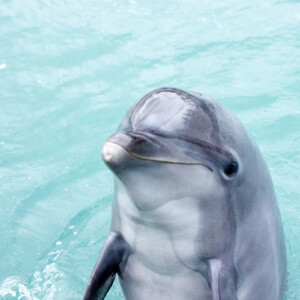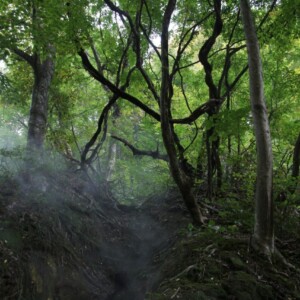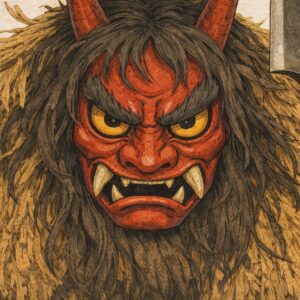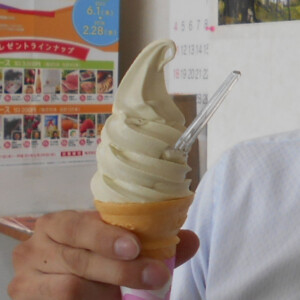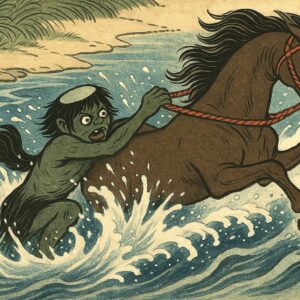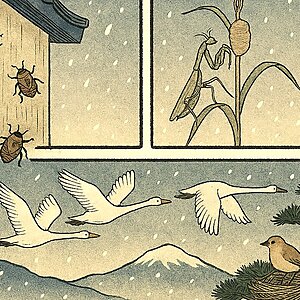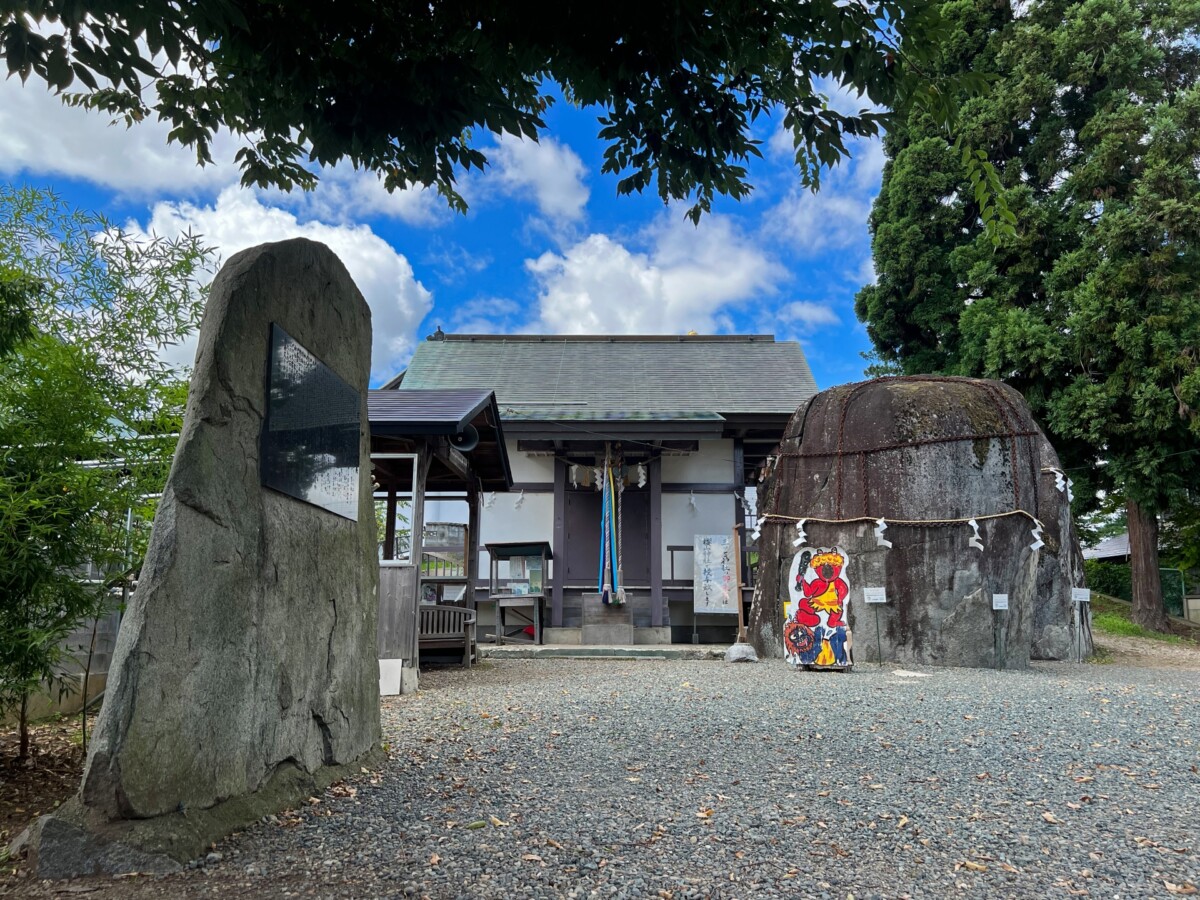
"Rock" and a demon's "hand" shape? Mitsuishi Shrine, filled with Iwate's roots [Iwate Prefecture]
table of contents
In the center of Morioka City, if you go north from the Jujutsu-mae intersection where Ishiwarizakura (Ishiwarizakura) is located on Chuo-dori Street, you will see Token-ji Temple along the road. Behind this temple is a shrine called Mitsuishi Shrine
``Mitsuishi-sama,'' there are three huge granite rocks strung with shimenawa ropes. It is said to have become the roots of
The legend of Mitsuishi-sama who punished demons
Once upon a time, when this area was not yet called Iwate or Morioka, there was a demon called Rasetsu Oni
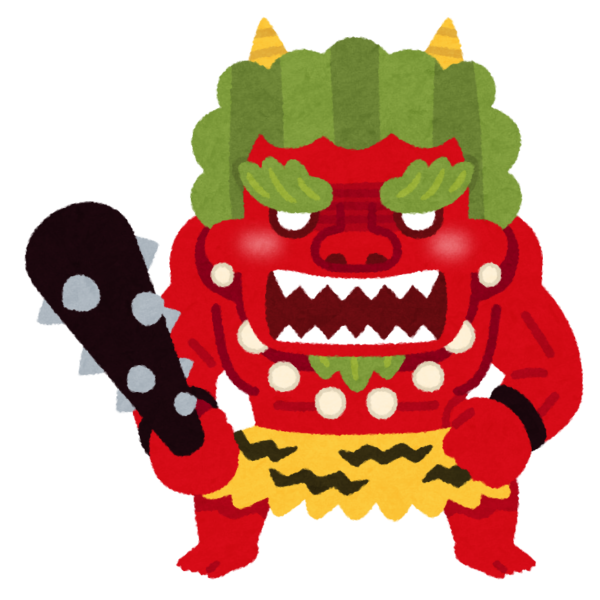
The people, who were completely troubled by the evil deed, prayed to Mitsuishi Mitsuishi-sama heard his wish and tied the Rakshasa demon to three large rocks in the shrine.
Shocked, the Rakshatsu demon vowed to ``never do anything bad again'' and ``never to set foot on this land again,'' and as proof of his promise, he left a handprint on a large rock on Mt. They fled in the direction of the mountain on the border with Gun Yahaba Town.
"Let's dance!" around the large rock and danced to celebrate the exodus of the demon.
The legend of Mitsuishi-sama is filled with the roots of various things.
Did you understand that this legend contains the roots of various things that represent Iwate?
We will break down and explain each legend below!
The demon's promissory note is "Iwate"
In the legend, the Rasetsu demon who was punished by Mitsuishi-sama promised to ``never do anything wrong again'' and ``never set foot on this land again,'' and left a handprint on a large rock as proof of his promise.
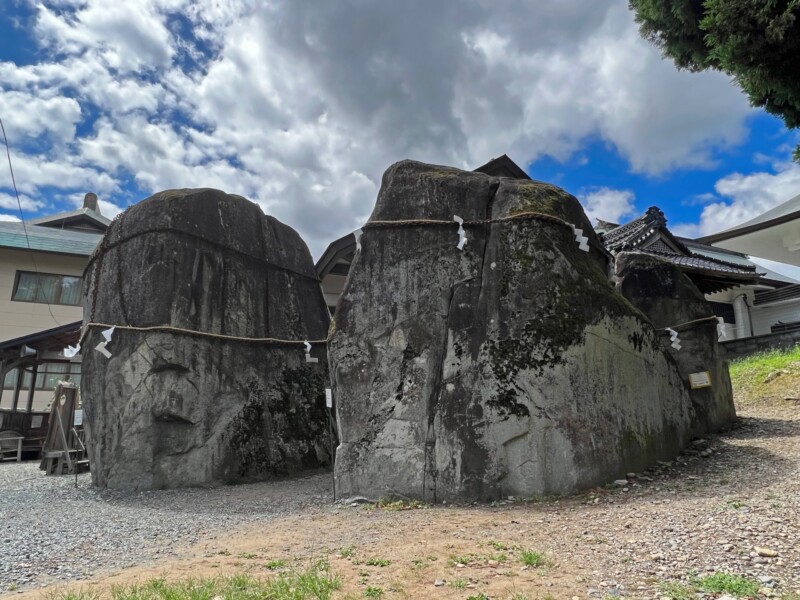
of the demon left on the ``rock'' at this time became the origin of the name `` Iwate.'' At this time, Iwate Prefecture didn't exist yet, so it became Iwate County or Iwate County.
It seems that I can still see what looks like demon handprints, but I don't know how true it is.
The promise to never set foot on this land again is the “uncome”
one of the promises made by demons , ``never to set foot on this land again,'' is the origin of `` Kozukata.''
It means, I won't come here again .
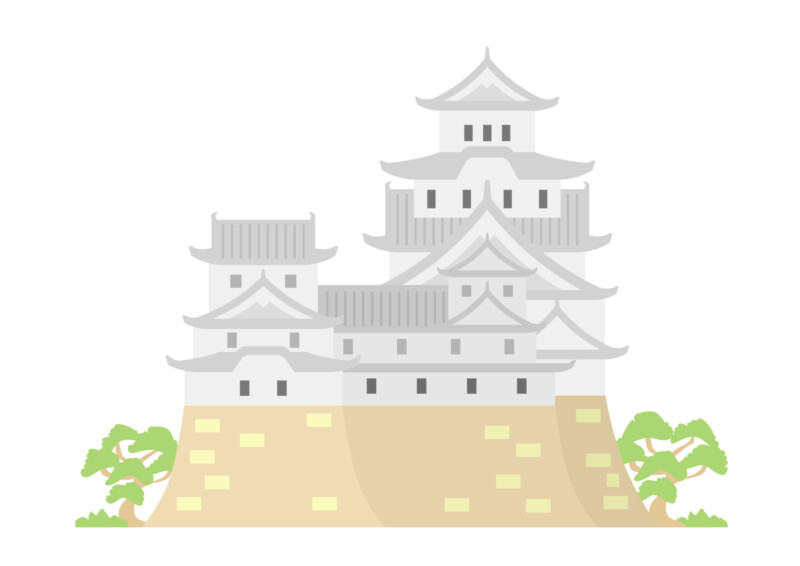
Kozukata is a word that has been used for the past 570 years to refer to the area around present-day Morioka City, Iwate Prefecture. The castle that originally existed in this area was called ``Fukikata Castle,'' it is said that the Nanbu clan built ``Morioka Castle'' ``Fukikata Castle.''
Even now, the name ``Kozukata'' is often used as the official name of Morioka.
Come on, let's dance "Sansa Odori"
After the demon disappears, the happy residents ``Come on, let 's dance!''
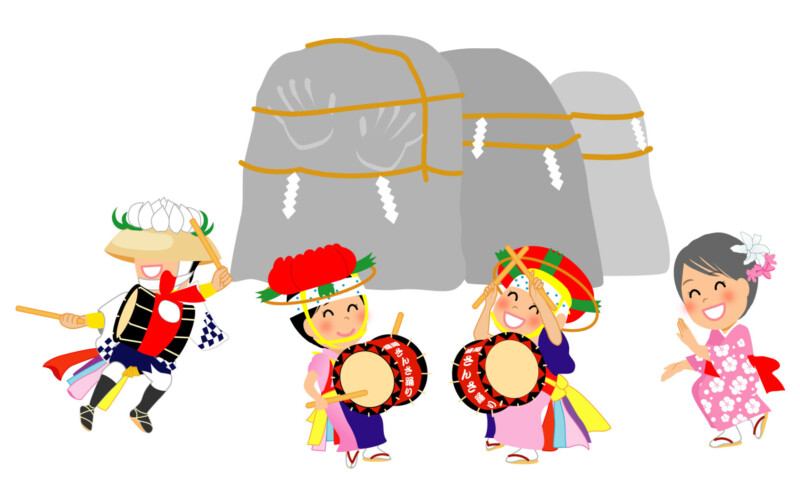
This ``Saasa Odori'' transformed into ``Sansa Odori'' became the Morioka Sansa Odori, a summer tradition in Morioka and of the six major festivals in Tohoku . It is said that there is.
Mitsuishi Shrine<Information>
- Name: Mitsuishi Shrine
- Address: 2-1 Nasukawacho, Morioka City, Iwate Prefecture, 020-0016
- Phone number: 019-662-4424
- Official URL: Iwate Prefecture Official Tourism Site Iwate Travel – Mitsuishi Shrine
Google Map
By the way, what is the origin of the name "Morioka"?
Around 1592, when Toshinao Nanbu, the 27th generation moved to this area, he disliked the name ``Fukakuta'' and changed the name to ``Morigaoka.'' Renamed. After that, "Morigaoka" came to be called "Morioka".
Two generations after Toshinao Nanbu, Shigenobu Nanbu, the 29th generation , created the Seisan Hoin of the 42nd generation of Eifuku-ji Temple (Shimomenai, Morioka City), a Shingon I recited the renga as follows.
No matter how many springs, Okayama is filled with dew of flowers and treasures.
Morioka'' was established by combining ``Mori Okayama'' in this renga `Morioka' ', and later the domain name itself was changed from ``Nanbu'' to ``Morioka'' and the ``Morioka Domain'' was born.
With the abolition of feudal domains and establishment of prefectures during the Meiji period, the Morioka Domain became Morioka Prefecture, and in 1889, with the implementation of the city system, the current Morioka City was born.
By the way, Eifukuji Temple, which led to the birth of ``Morioka,'' still exists today under the mountain name ``Hojumori Okayama.''
Eifukuji <Information>
- Name: Hojumori Okayama Eifukuji Temple
- Address: 2-1-1 Shimomenai, Morioka City, Iwate Prefecture 020-0003
- Phone number: 019-662-4424
- Official URL: -
Google Map
summary
This is the origin of place names that we don't usually pay attention to, but if you get curious and look into it, you'll find it quite interesting.
I don't think anything has a name without a reason, so if you're curious about something, do some research and you might discover something new.
Mitsuishi Shrine , the root of Iwate, Furakata, and Sansa Odori, is close to the center of Morioka city and has easy access, so it might be a good idea to include it as one of your options when planning a trip to Morioka. Hmm!



![[Iwate Prefecture] Why is Iwate/Morioka called that? Find out the origin of place names! 3748351_m](https://jp.neft.asia/wp-content/uploads/2022/07/3748351_m-150x150.jpg)
![4 power spots in Morioka City! Introducing historical sites that history lovers should visit [Iwate Prefecture] Morioka Castle Ruins 3](https://jp.neft.asia/wp-content/uploads/2023/06/70ec9edd8ce8468506446f3cf8324800-150x150.jpg)
![[2024 event information] “Morioka Sansa Odori” colors the summer of Iwate Morioka Morioka Sansa dance (stamina)](https://jp.neft.asia/wp-content/uploads/2023/07/25663559_m-150x150.jpg)
![The specialty of Genbikei, "Flying Dango," is definitely worth a visit! Delicious activities! [Ichinoseki City, Iwate Prefecture] Genbikei bus stop](https://jp.neft.asia/wp-content/uploads/2017/04/IMG_5931-150x150.jpg)
![Bottle Don is the definitive Sanriku souvenir that looks delicious! [Iwate Prefecture] Bottle don (abalone, scallop, salmon roe)](https://jp.neft.asia/wp-content/uploads/2023/06/IMG_5048-150x150.jpg)
![Ryusen-no-no-no-no-no-no-no-no-no-no-no-no-no-no-no-no-no-no-no-no-no-no-no-no-no-no-no-no-no-no-no-no-no-no-no-no-no-no-no-no-no-no-no-no-no-no-no-no-no-no-no-no-no-no-no-no-no-no-no-no-no-no-no-no-no-no-no-no-no-no-no-no-no-no-no-no-no-no-no-no-no-no-no-no-no-no-no-no-no-no-no-no-no-no-no-no-no-no-no-no-no-no-no-no-no-no-no-no-no-no-no-no-no-no-no-no-no-no-no-no-no-no-no-no-no-no-no-no-no-no-no-no-no-no-no-no-no-no-no-no-no-no-no-no-no-no-no-no-no-no-no-no-no-no-no-no-no-no-no-no-no-no-no-no-no-no-no-no-no-no-no-no-no-no-no-no-no-no-no-no-no-no-no-no-no-no-no-no-no-no-no-no-no-no-no-no-no-no-no-no-no-no-no-no-no-no-no-no-no-no-no-no-no-no-no-no-no-no-no-no-no-no-no-no-no-no-no-no-no-no-no-no-no-no-no-no-no-no-no-no-no-no-no-no-no-no-no-no-no-no-no-no-no-no- [Iwate Prefecture] Ryusendo Cave (first underground lake)](https://jp.neft.asia/wp-content/uploads/2023/07/PXL_20230512_052246926.NIGHT_-150x150.jpg)
![[Series ②: The role of the previous nine years and the role of the second three years] The role of the previous nine years is from the truce to the battle again, and the Kokufu army is struggling Taga Castle Ruins](https://jp.neft.asia/wp-content/uploads/2023/11/a0b8b1213124e7a13c7308fa81e053a2-150x150.jpg)
![[Iwate Prefecture] Soft-serve ice cream with sake, miso and wasabi flavor! Why are the soft serve ice cream eaten at roadside stations so delicious? There's also school lunches! Iwate Prefecture Catch](https://jp.neft.asia/wp-content/uploads/2025/06/915fd0ce722ab0f21e74864401170847-150x150.jpg)
